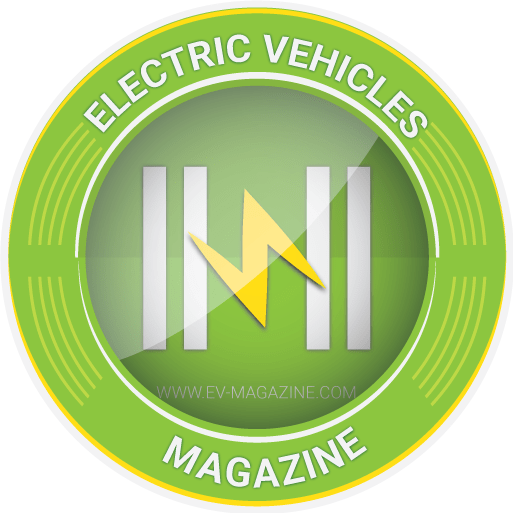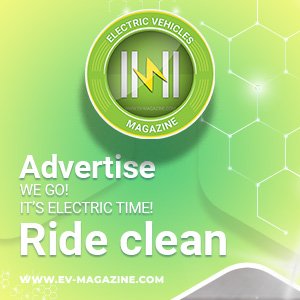






















It’s still the Ioniq 5 you know and love, with some useful tweaks plus hot-rod and XRT versions.
The Hyundai Ioniq 5 crossover utility vehicle is now a familiar site in regions where electric cars are popular. Entering its fourth model year in North America, the square-edged hatchback gets some minor updates to styling, inside and out, and to its mechanical specs and charge port.
It also adds two new versions that greatly expand the range. The Ioniq 5 N is the wild-child, high-performance hot rod version—one so well executed and such fun to drive that it’s won multiple awards in multiple countries. For a different audience, the Ioniq 5 XRT is an off-road-inflected model with more ground clearance, brawnier tires, and an added overlay of butch in its trim. So far it’s sold only in North America.






Rather to the industry’s surprise, Hyundai sold more EVs in the U.S. in 2024 than any maker except Tesla—beating Ford, GM, and BMW in volume. Its electric mainstay, the Ioniq 5, had its best year ever in 2024, with sales up 31 percent to 44,400 (note the Tesla Model Y sold nine times that number). And the company, long one to watch in EVs, isn’t letting up at all on its battery-powered efforts. To that end, all 2025 Ioniq 5s sold in North America except the 5 N are now built at its new Metaplant in Ellabell, Georgia, about 25 miles outside Savannah.
We’ve only gotten an hour or so with the 5 N, but eagerly await the loan of one in late February. Meanwhile, we spent Valentine’s Day driving both the updated 2025 Ioniq 5 and new Ioniq 5 XRT in and around Palm Springs, California.

Photo Couresty of Hyundai.
Mild style evolution … very mild
You’ll be forgiven for not noticing the exterior changes in the 2025 Hyundai Ioniq 5. There are new wheel designs, and the front fascia—the plastic shield below the sheet metal—is slightly taller and squarer, with a protruding lower edge that makes it “more robust, more crossover-like,” in the words of Brad Arnold, head of exterior design. The best way to tell a 2025 from its older brethren, in fact, may be the presence of a rear wiper—a much-requested item among owners.







The interior got somewhat more substantial changes. The company responded to owner feedback by adding knobs and buttons for audio volume and HVAC (heating, ventilation, air conditioning) controls like heated seats and steering wheel. That puts Hyundai very on trend: hard controls are coming back after years of makers moving everything possible into the central touchscreen, often distracting drivers at speed who must hunt through menus for a specific function.
All 2025 Ioniq 5 versions now get dual 12.3-inch screens and USB-C ports—and Android Auto and Apple CarPlay remain standard, both wirelessly and via cable. They also get Hyundai Pay, which the company suggests will soon be usable to pay for parking and/or charging. We’d still prefer standard Plug and Charge, but we’ll hold off on that judgment until we try it.
A bit more battery, a bit more range
The 2025 Ioniq 5 range gets new and updated cells. Battery capacity and EPA-rated range improve across the board. The Standard Range pack goes from 58 to 63 kilowatt-hours, while the Long Range pack grows from 77.4 to 84 kWh. Rated range for all-wheel-drive versions rises accordingly, from 260 to 290 miles (SE and SEL) or 269 miles (Limited). All three trims with rear-wheel-drive go from 303 to 318 miles, while the Standard Range version with its smaller pack stretches from 220 to 245 miles. Finally, the new-for-2025 Ioniq 5 XRT with standard AWD is EPA-rated at 259 miles.
On the road, the latest Ioniq 5 feels … well, pretty much like the previous three years’ worth. The ride is just this side of soft, in contrast to Tesla’s more BMW-like suspension tuning. But the Ioniq 5 hung on perfectly well as we tossed it through twisty mountain roads—at least until we rose above the snow line around 6,000 feet.









Photos Couresty of Hyundai.
Hyundai continues to offer three levels of regenerative braking, as well as its “i-Pedal” one-pedal drive mode. Annoyingly, while the regen level persists through power cycles, i-Pedal doesn’t. You have to remember to ask for it each time you start the car, something that GM, Ford, and others conquered as much as a decade ago. Why? Hyundai execs couldn’t say.
In the off-road portion of our test day, the Ioniq 5 XRT—it stands for ‘Extreme Rugged Terrain’—coped fine with rutted, ridged, bumpy trails in soft sand, and an occasional rocky path as well. It’s hardly a rock-climbing monster like a Jeep Wrangler, however, and isn’t meant to be. Instead, it’s probably best suited to people like this reviewer. In snowy winter weather, my steep, curving, uphill driveway in the Catskill Mountains is steep enough that it’s pretty much impossible for any front-wheel-drive vehicle to climb—and ground clearance gets a lot more important.
For more details on the Ioniq 5 XRT, stay tuned for a comparison of that model against the Ford Mach-E Rally, the equivalent trim for the electric Mustang SUV (which outsold the gasoline Mustang last year … but we digress).
NACS port and a free charging station
A final note on equipment: All U.S.-built Ioniq 5s—meaning the whole lineup except the hot-hatch 5 N version, built only in South Korea—come with NACS charging ports as standard. Hyundai moves fast; those cars are the very first ones offered in the U.S. with native NACS ports other than Teslas. Laudably, Hyundai includes a CCS-to-NACS adapter with every new Georgia-built Ioniq 5—and it will soon announce a program to allow owners of its CCS-equipped EV models to get a free NACS-to-CCS adapter, letting them take advantage of the Supercharger network too.
Using the adapter provided with a 2025 Ioniq 5, a CCS charging cable capable of delivering 257 kW can charge any Ioniq 5 from 10 to 80 percent in just 20 minutes. Hyundai has also added the ability for drivers to pre-condition the battery if they’re headed for a charging station—even if they haven’t put it into the navigation as a destination, which triggers battery conditioning if needed.
Ioniq 5s will still charge faster at CCS fast-charging stations than at Tesla Superchargers, though, due to the E-GMP platform’s 800-volt battery architecture. Version 3 Tesla Superchargers charging an Ioniq 5 will peak at roughly 135 kW, meaning they will take 30 minutes from 10 to 80 percent for a Long Range Ioniq 5 or 24 minutes for a Standard Range model. (Upcoming Version 4 Superchargers switch from low-voltage, high-current power delivery to higher voltage with lower current, meaning they should charge just as fast as CCS.)
As for overnight charging, with an 11-kilowatt onboard charger, Hyundai quotes Level 2 charging times from 10 to 100 percent at 7 hours, 20 minutes for the Long Range pack and 5 hours, 40 minutes for the Standard pack.
Hyundai believes the offer of free home charging sells more EVs. To that end, it includes a free ChargePoint Level 2 charging station with every Ioniq 5—or, for owners who can’t use it or already have one, a $400 credit to use at public charging stations. Hyundai does not, however, go as far as Ford. The Dearborn maker throws in not just the free charging station but free “standard” installation as well—and it credited its “Ford Power Promise” program with its highest-ever quarterly sales of the Mach-E crossover in Q4-2024.
From $44K to $60K
The 2025 Hyundai Ioniq 5 range starts with the SE Standard Range, with its lower-capacity battery and no all-wheel-drive option, priced at $43,975. Rear-wheel-drive SE and SEL trims are $48,025 and $50,975 respectively; AWD adds $3,500 to each. The top-of-the-line Limited model costs $53,675 (RWD) or $59,575 (AWD), and the new XRT model is $56,875 with AWD standard. At present, Hyundai isn’t offering a la carte options for the lineup. All prices quoted include the mandatory delivery fee of $1,475.
All 2025 Ioniq 5 SE, SEL, Limited, and XRT versions are built in Georgia and come with a NACS port as standard. Hyundai expects to switch to battery packs with US-built cells for those models, perhaps as soon as March, which would qualify them for the full EV purchase incentive—if it remains in force. The 2025 Ioniq 5 N performance model is built only in South Korea; it continues with a CCS port “for the moment,” though Hyundai execs hinted it will be updated to align more closely with the US-built cars in future.
Hyundai provided airfare, lodging, and meals to enable Charged to bring you this first-person drive report.
Source link by Charged EVs
Author John Voelcker
#Drive #updated #Hyundai #Ioniq #adds #XRT #offroad #model #growing #lineup




![Hyundai’s electric hot hatch spotted out in the wild for the first time [Images] Hyundai’s electric hot hatch spotted out in the wild for the first time [Images]](https://ev-magazine.com/wp-content/uploads/2025/12/1766723605_Hyundais-electric-hot-hatch-spotted-out-in-the-wild-for-324x160.jpeg)